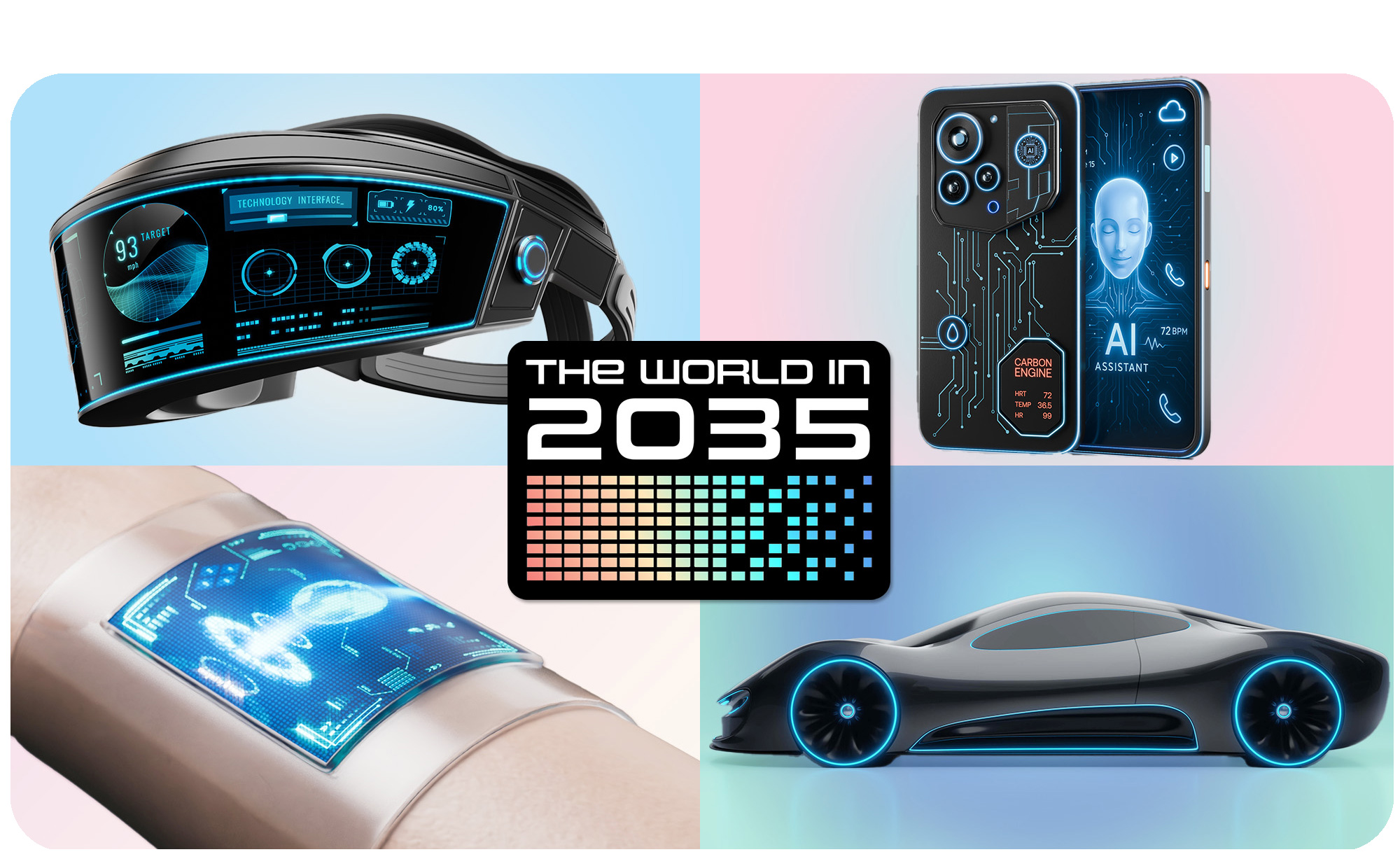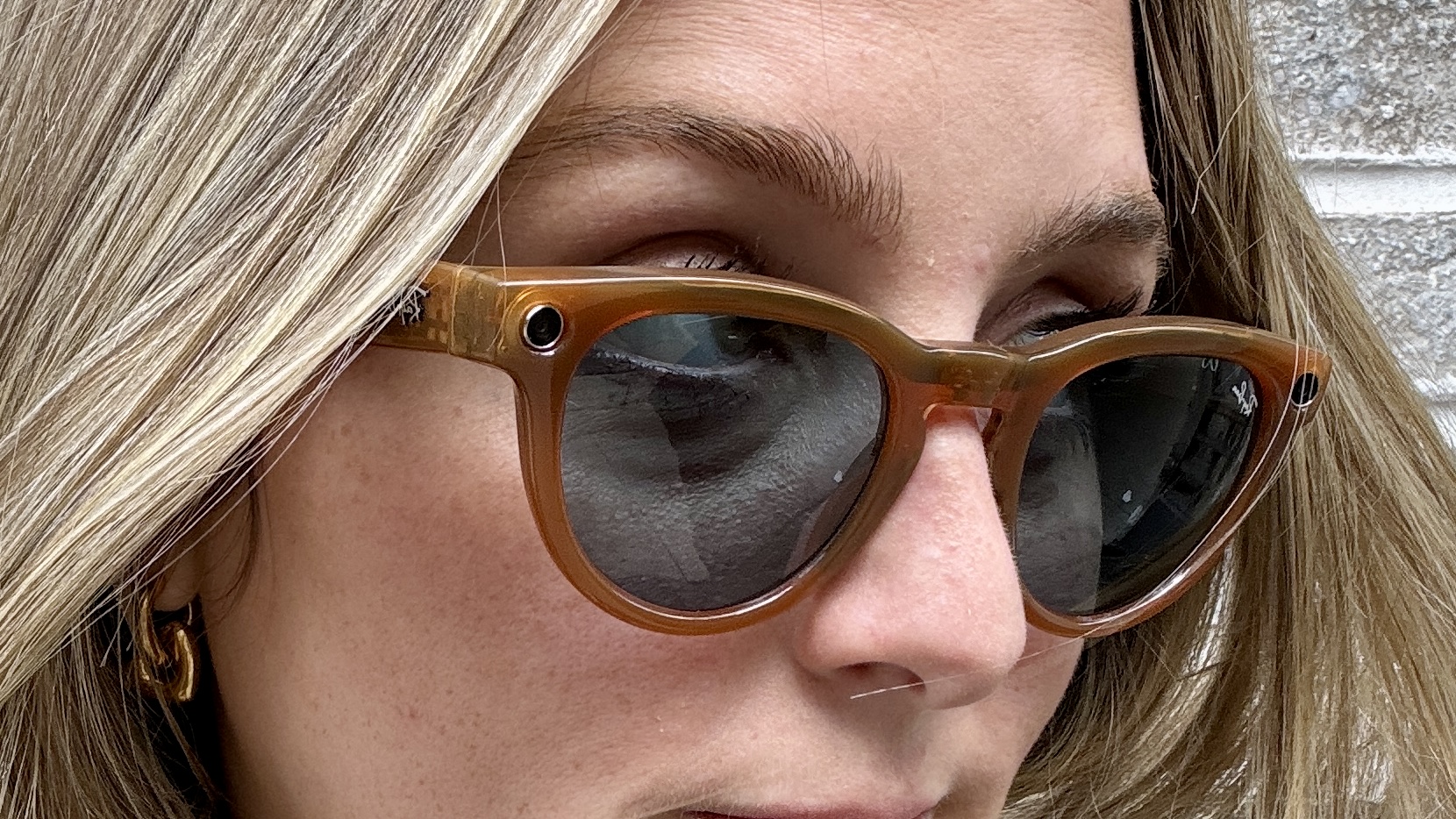Your TV in 2035 will be wildly different — and it’s not what you think
In the world of TVs, a ton can happen in ten years

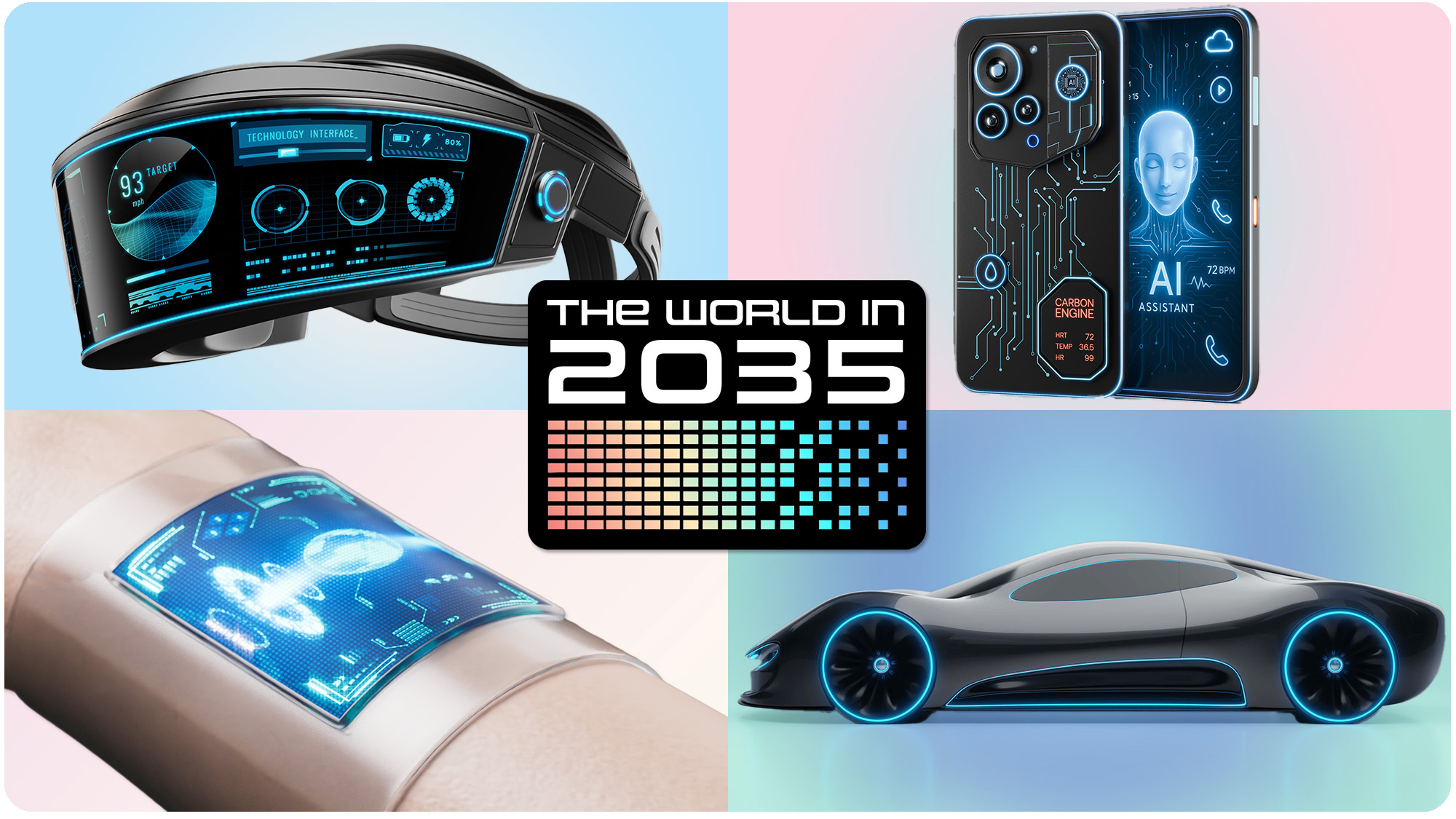
AI | Smart Glasses | Wearable Tech
Smartphones | iPhones | Robots | Cars | TVs
When I began covering the industry in 2014, plasma TV — once seen as the gold standard for picture quality — was on its way out. Taking its place was a new, much-ballyhooed display technology that was as expensive as it was impressive: OLED.
In that very same year, I was regularly reviewing full-HD, 1080p TVs, but reviewing a 4K TV was something of a treat. My TV-testing lab was full of 3D glasses and curved screens.
Over the following decade, I’ve watched OLED TVs get better than I ever thought possible — all while tumbling in price. 4K TVs have fully taken over every shelf, their ultra-high resolution no longer considered a premium.
Not everything panned out. While a small, passionate contingent of fans still adore their aging 3D TVs, you’ll have to search literal dustbins of history for replacement glasses and 3D Blu-rays. Curved TVs? Reduced to a punchline.
When I look into the future of living-room entertainment, I’m reminded of the last ten years. Some of this stuff — like the proliferation of 4K TVs — seemed inevitable at the time. Others less so.
In 2025, the landscape looks familiar. 8K TVs are very much here, but their future feels less certain. OLED TVs continue to evolve, but newer LED-based technologies are knocking at the door, and I’m told that their arrival will spell the end of OLED altogether.
What can we learn about the future of TVs from the decade that preceded it? What is inevitable about TVs in 2035? Is anything inevitable?
With the help from engineers, industry experts and brand ambassadors, I’m taking a peek into the living room of the future. With a little luck, I’m hoping not to see a single curved TV.

MicroLED: Where is it?
We’ve been hearing about MicroLED TVs for a while now. Heck, having been to CES several times, I’ve seen MicroLED TVs up close and personal more times than I can count.
This bleeding-edge display technology combines the perfect black levels and pixel-level dimming of OLED with the searing brightness of a souped-up LED TV. As the name suggests, these panels are powered by micro-sized LEDs that are much smaller than those of the best Mini-LED TVs on the market.
“MicroLED is a more attractive technology than OLED because it combines the best aspects of self-emissive displays with superior performance characteristics and longevity.”
— David Gold, President of Hisense USA
Best of all, MicroLED TVs aren’t susceptible to burn-in, a dreaded outcome in which an OLED TV’s delicate display is imprinted with ghostly images of pictures past.
Burn-in (or the looming threat of burn-in) was plasma’s primary cause of death. And, for all of OLED’s tremendous success over the years, burn-in remains a concern for many TV-shoppers.
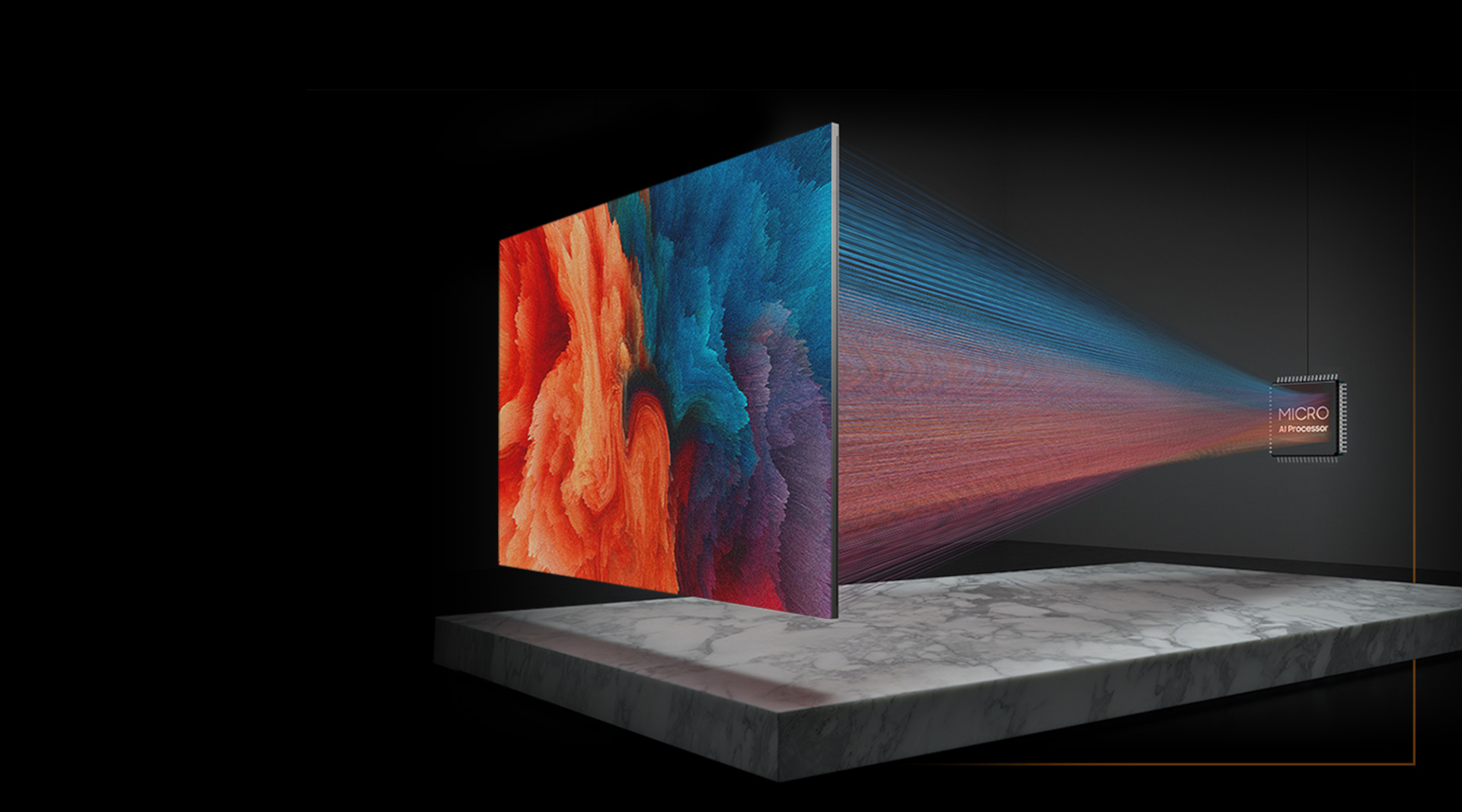
I reached out to David Gold, President of Hisense Americas & Hisense USA, to ask about the brand’s own MicroLED TV — and why the tech could be coming for OLED.
“MicroLED is a more attractive technology than OLED," says Gold, "Because it combines the best aspects of self-emissive displays with superior performance characteristics and longevity.
“While OLED may offer deep blacks and infinite contrast via self-emissive pixels, it relies on organic materials that can degrade over time, leading to potential burn-in or image retention issues and limitations in peak brightness. MicroLED, on the other hand, uses inorganic LEDs, making it immune to burn-in, incredibly durable, and capable of achieving far higher peak brightness levels – up to 10,000 nits in our top-of-the-line MX model.”
Having seen this model in person, I can personally attest that yes, it’s really bright.
So where are all of the MicroLED TVs?
So, from top to bottom, MicroLED sounds like the bee’s knees. It’s brighter than traditional OLED displays, it seems to be more durable over time, and most importantly, it’s got a whizz-bang, easily marketable name.
So where are they?
As it turns out, a MicroLED TV is incredibly expensive to manufacture, and no one is too keen on manufacturing a MicroLED TV at a size point that you or I would consider, well … rational.
In addition to Hisense’s gorgeous MicroLED TV, every other MicroLED TV I’ve seen has been staggeringly large, too. TCL’s MicroLED TV — the X11H Max — measures in at 163 inches. Samsung’s latest MicroLED TV is 114 inches. At well over $100,000 for these larger-than-life models, current MicroLED displays are better suited for retail spaces than they are living rooms.
RGB technology harnesses thousands of optical lenses that contain distinct red, green and blue LEDs, allowing the TV to independently dim small, color-controlled clusters. The result is better brightness, better color volume and less blooming.
In late 2023, the MicroLED Industry Association released a report stating that widespread adoption of MicroLED TVs was unlikely to happen before the early 2030s.
But that doesn’t mean some brands aren’t trying to bridge the gap.
Hisense recently unveiled a new type of Mini-LED display technology that, in many ways, feels like a spiritual precursor to a fully commercialized MicroLED TV. The 116UX TriChroma — which made its debut at CES 2025 — leverages an all-new type of Mini-LED technology that Hisense refers to as RGB Local Dimming.
In short, its display harnesses thousands of optical lenses that contain distinct red, green and blue LEDs, allowing the TV to independently dim small, color-controlled clusters.
The benefits are promising: better brightness, better color volume and less blooming.

“We absolutely see the 116UX TriChroma with RGB Local Dimming as a critical stepping stone,” says Gold, when asked about the direction Hisense is headed.
“While scaling such advanced backlighting down to more popular screen sizes presents significant engineering and cost challenges due to the intricate integration of thousands of precise LEDs, Hisense is actively working on these solutions.”
“Our goal is to systematically introduce MicroLED to the consumer market in varying sizes and price points, ensuring that this ultimate display technology eventually reaches a wider audience."
— David Gold, President of Hisense USA
Samsung, too, is developing a similar technology — the brand’s first-ever RGB MicroLED TV hit the scene at the same time as Hisense’s 116UX TriChroma stunner, and while Samsung is being more tight-lipped about the ins and outs of its hardware, it seems to be similar to Hisense’s TriChroma TV in its approach.
Still, despite its name, Samsung’s RGB MicroLED TV shouldn’t be confused with true MicroLED technology. MicroLED backlights are present, but the TV lacks self-emissive pixels.
Both Hisense and Samsung's TVs are very much intended to be the connective tissue between today’s best Mini-LED TVs and the true MicroLED TVs of tomorrow. They’re slated to be released later this year, and you can expect them to cost a lot.
Such is the price of taking a swing at OLED.
“Our goal is to systematically introduce MicroLED to the consumer market in varying sizes and price points, ensuring that this ultimate display technology eventually reaches a wider audience,” says Gold.

The future of OLED
This year, Samsung and Sony are sticking to their guns with quantum dot-equipped OLED displays, iterating on a successful (albeit relatively new) formula: combining self-emissive displays with color-boosting nanocrystals.
LG OLEDs, on the other hand, are evolving quicker than even I can keep up with.
At CES this year, the world leader in OLED TVs announced that its flagship OLED series — the LG G5 — would be shedding its brightness-enhancing Micro Lens Array (MLA) technology, which had previously helped it keep up with the brighter, punchier QD-OLEDs from Samsung and Sony.
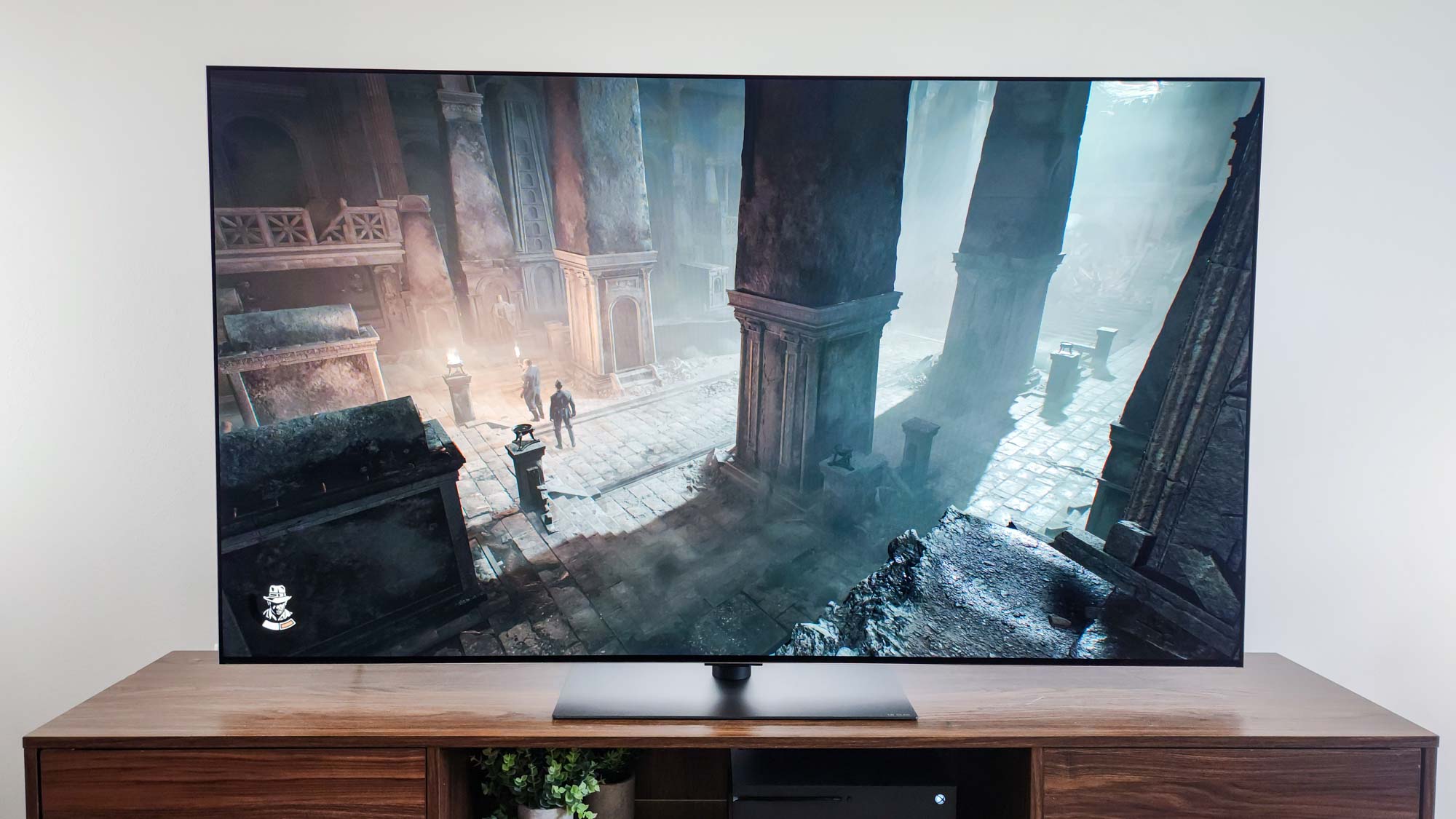
I reached out to LG Display last month to get the inside scoop on its all-new, four-stack OLED design, which is officially referred to as a 4th-Generation RGB Tandem OLED. LG’s oft-praised MLA technology had just entered the scene a few years prior — and now the brand was casting it off completely in its flagship OLED?
“We were looking to improve OLED’s already outstanding picture quality, in line with our stated goal to continue its technological evolution,” remarks a representative from LG Display.
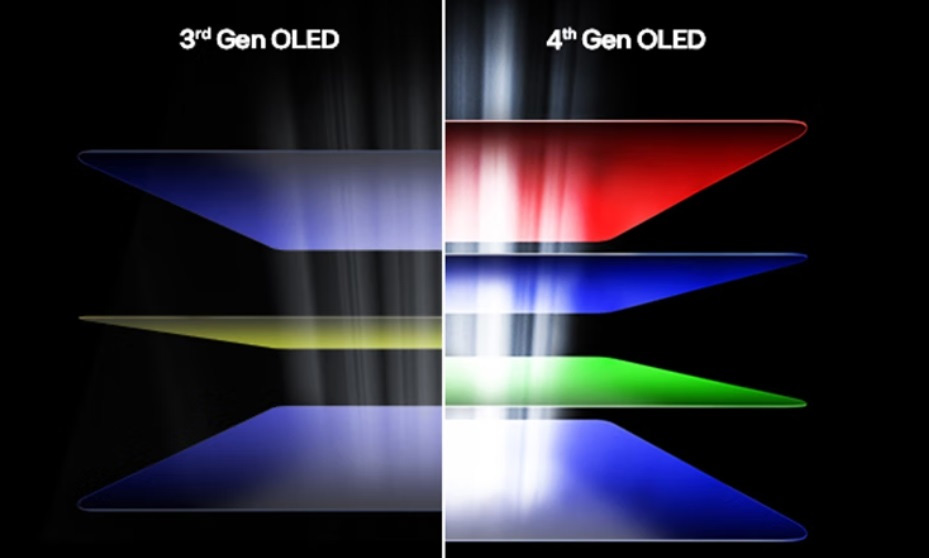
Despite owning over 50% of the global OLED TV share in 2024, despite the perennial accolades heaped onto its B, C and G Series OLEDs, one gets the impression that LG’s quest to improve its OLED TVs will never be done.
I asked LG Display about this shared goal, and whether or not it sees the gap between LCD/LED and OLED shrinking: “Since this difference is structural, it is difficult for other displays to completely close the picture quality gap with OLED — even with technologies like RGB Mini-LED applied ... [and] it's highly likely that the gap will widen even further in the future.”
“Even if a new self-emissive display technology other than OLED emerges, it will not be easy to catch up quickly with the accumulated picture quality-related technological expertise behind OLED.”
A Representative of LG Display
And what about true MicroLED — a rival with many of the same built-in benefits as OLED?
“Even if a new self-emissive display technology other than OLED emerges, it will not be easy to catch up quickly with the accumulated picture quality-related technological expertise behind OLED.”
It wasn’t long after the arrival of LG Display’s RGB Tandem OLED that I was already reading a press release about the manufacturer’s latest innovation: the successful commercialization of a so-called “dream OLED,” which taps blue phosphorescence for a more energy-efficient, longer-lasting display.
Otherwise known as Hybrid Tandem OLED, LG Display has every intention of scaling its smaller-sized prototypes up to living room-sized models sometime in the next few years: “We will keep developing materials and element structures that allow each individual stack to deliver maximum performance. Fourth-generation OLED will serve as the core foundation for the development of these next-generation technologies.”

Are 8K TVs the future or just a speedbump in the 4K roadmap?
A pretty reliable joke I was able to tell for years, whether breaking the ice at a party or elbow-nudging at trade shows, was to remark upon how soon we’d all have to replace our 4K TVs with 8K models. That’s the tech industry, for ya!
That day ultimately never came, obviously, but will it arrive in the future?
Samsung thinks it will, but industry analysts are skeptical.
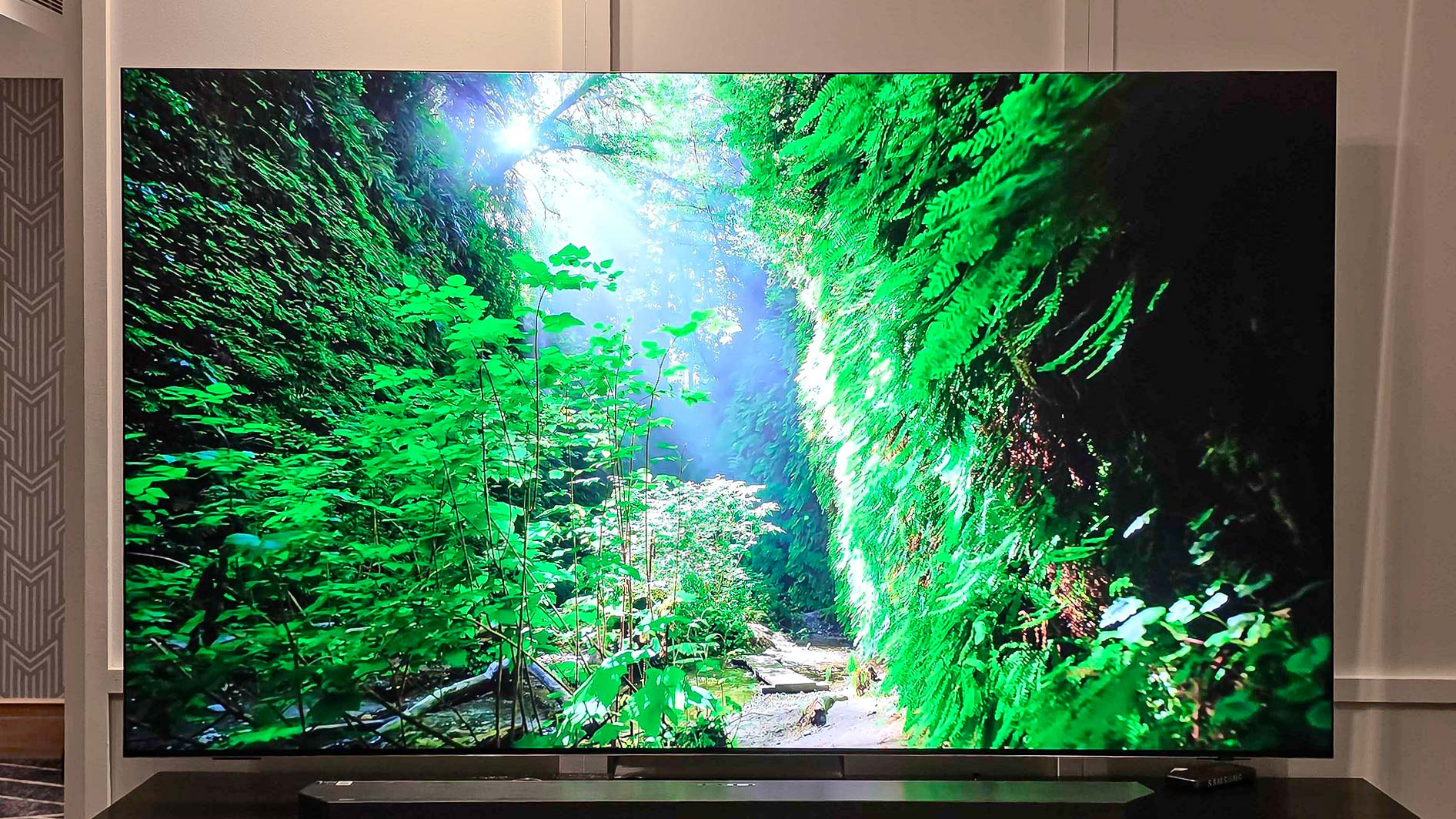
I recently spoke with Rick Kowalski, who oversees industry forecasting efforts at the Consumer Technology Association. As Senior Director of Business Intelligence at CTA, Rick has had a front-row seat to 8K's turbulent journey.
"In recent years we've seen TV manufacturers de-emphasizing 8K," Kowalski says. "It's not to say that 8K will never emerge, but for the time being, TV-makers are more focused on squeezing everything they can out of 4K displays, and we'll see improvements there [with 4K] over the next ten years."
It’s true that there’s still plenty of room for 4K TVs to improve, but beyond the displays themselves, Rick touches on what might be 8K’s biggest hurdle: content availability.
"There's not a big push for 8K content anytime soon,” he says.
"It's not to say that 8K will never emerge, but for the time being, TV-makers are more focused on squeezing everything they can out of 4K displays."
Rick Kowalski, Senior Director of Business Intelligence at CTA
And this is the rub. When Sony quietly confirmed the discontinuation of its only 8K TV — the Z9K — I had this to say on the matter: “Without 8K content, no one wants to splash out on a pricey 8K TV. Since very few people own 8K TVs, content creators have little reason to produce 8K content.”
From where we’re sitting in 2025, it seems like a tall order for everyone involved in the creation and distribution of content to invest all at once in the infrastructure needed to deliver 8K content. It affects everything from broadcast equipment to internet bandwidth.
It’s not surprising, either, considering how relatively little 4K content most of us actually watch. Sure, the latest, high-budget streaming shows are available in 4K HDR — titles like “Andor” and “The Bear.” And, if you splurge on upgraded subscriptions for cable-cutting services like YouTube TV and Fubo, you might enjoy a 4K sports broadcast every now and then.
Nearly everything else — from cable to over-the-air broadcasts — is upscaled to your 4K TV’s native resolution. On an 8K display, this content would have to be upscaled to an even higher amount of pixels. And, in this scenario, there’s a chance it would look even worse to the average viewer watching on a 65-inch 8K TV from a normal viewing distance.
8K isn't DOA, but for the next few years, 4K will continue to be the de facto resolution.

VR has its own set of challenges to work out
TVs aren't the only way we watch content these days. There's our phones, tablets, monitors, and now, VR headsets need to be taken into consideration, too. It's the latter that could hold a lot of promise for high-resolution video.
“On other screen technologies,” Kowalski says, “like if you’re looking at [a virtual reality headset], you really do want higher pixel counts and more pixel density, because you have something that’s so close to the eye, and you’re trying to cover a [bigger] field of vision.”
I’ve watched my colleagues cover virtual reality (VR) and augmented reality (AR) for as long as I’ve been a tech journalist, and while many of these industry developments have come and go without capturing my interest, one application excites me to no end: watching stuff on a “huge,” virtual movie screen.
Imagine a world where TVs aren't even necessary. Imagine a time when you can throw on a headset and watch whatever you want at whatever size feels comfortable to you.
That's exactly what happened with our Global Editor in Chief, Mark Spoonauer, when he watched “Oppenheimer” on a simulated, 100-foot screen — courtesy of the Apple Vision Pro: “I wondered if I would ever need to go to the movies again. And then I let my 16-year-old son take a turn in the Vision Pro and he got lost in the film, too."
As nice as the experience sounds, it was a novelty — one that wore off quickly.
"We ultimately decided to watch it together on a plain-old 65-inch Samsung QLED TV. And I have to say I was disappointed — not in the movie but the presentation.”
So what happened?
VR just doesn't provide the same social experience as watching a movie in the same room as someone else. It can be used to help connect you with people long distance, but the hardware puts a barrier between you and the people you want to watch with.
That's not an opinion everyone shares, however.
“Are [VR headsets] butting heads with communal experiences? I’d argue that they’re not. I think they’re adding new use cases and viewing experiences on top of what we already have. In the case of the Vision Pro and spatial computing … it’s really just opening up a new avenue for tech.”
In 2035, I expect that VR developers will have made great strides in this area. I'm hoping they'll have figured out how to make headsets lighter, more user-friendly and innocuous enough that it's feasible for everyone to be wearing one without feeling isolated from one another.
Of course, when you talk about future technology, you have to talk about AI...

AI in your TV: Separating wishcasting from forecasting
In 2025, just about every major TV brand is leveraging AI in some capacity — TV manufacturers included.
At LG, fourth-generation OLED has a further refined and upgraded AI algorithm that "delivers real-time picture quality enhancement, reflecting the actual viewing experience of customers.”
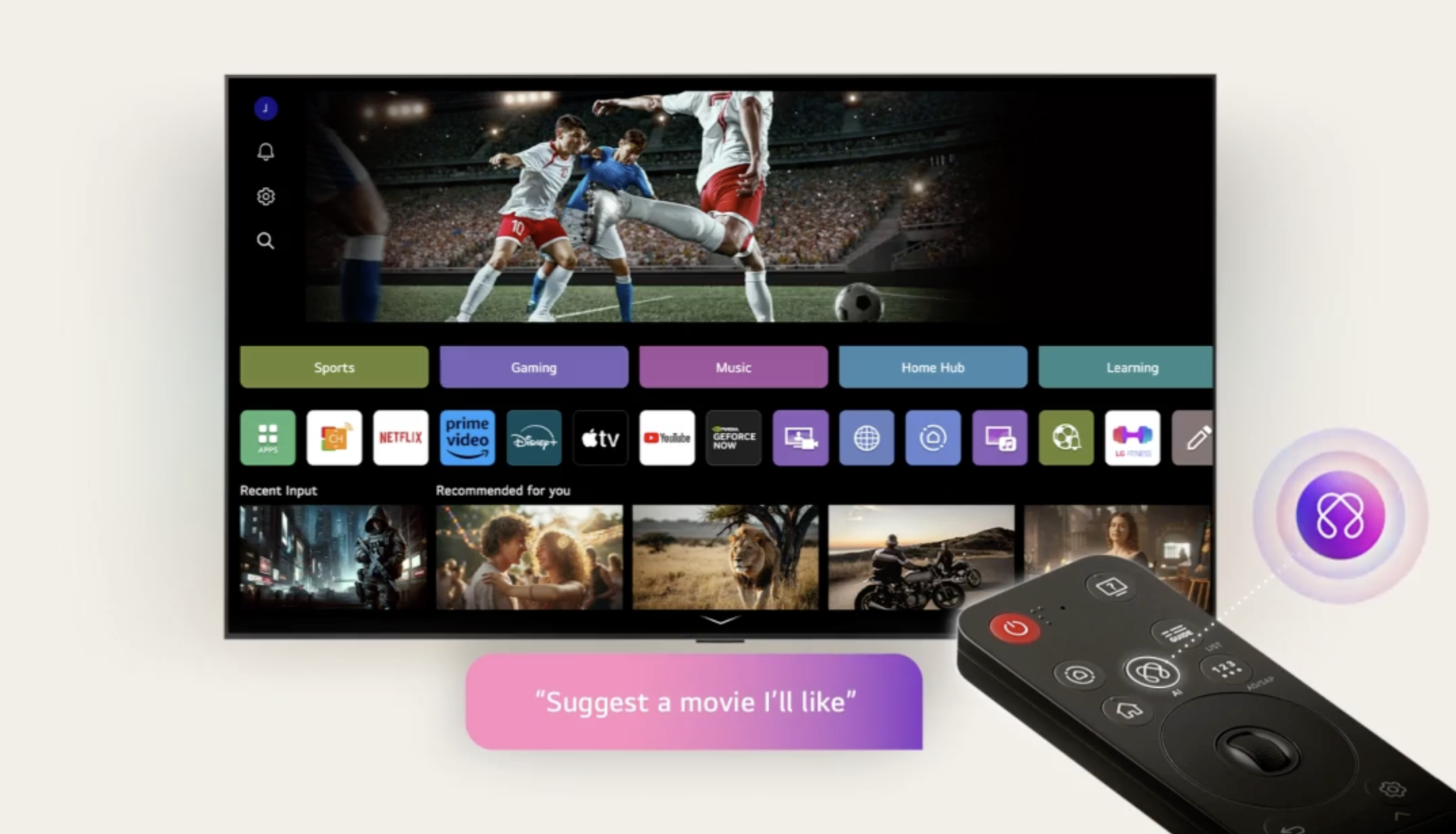
We're already seeing the fruits of this labor on LG TVs: The newest version of webOS — the software suite found in all LG smart TVs — arrived with AI-driven recommendations for movies and shows based on what it gleans from a user’s taste.
LG's AI Chatbot, also included in webOS this year, leverages Large Language Models (LLMs) to serve as a guide to various TV features, troubleshooting and more. And, while I remain skeptical about most people’s eagerness to talk to their TV, Kowalski seems to think this will be AI’s primary application in TVs as we look ahead to 2035.
“The types of AI we’ve been doing for several years now, prior to Large Language Models, is more of a machine-learning process that helps improve picture quality. I expect that to continue, [but] more visibly, I expect AI to take the form of intelligent assistance that you can converse with about what show to watch."
"I expect AI to take the form of intelligent assistance that you can converse with about what show to watch."
Rick Kowalski, Senior Director of Business Intelligence at CTA
Interestingly, this is a much more restrained forecast than what TV brands would have you believe based on how they talk about not just the future of AI, but the present-day reality, too.
No TV brand has boosted AI integration this year more than Samsung, whose Vision AI features include AI-generated wallpaper, live language translation and a proposed feature that is said to generate recipe ideas based on any given food that happens to be on the screen.
Unfortunately, based on first-hand experience, I can tell you that Samsung’s AI-generated wallpaper induced a joyless shrug, and as of March 2025, both the live translation feature and recipe tool weren’t yet available.
Broadly speaking, I’m not sure if I’d ever have much of a use for features like this. I’m an enthusiastic home cook who’s more likely to be inspired by a cookbook than an episode of “The Bear.” I don’t need digital wallpaper, as I turn my TV off when I’m not actively watching it.
And what would I chat with a TV’s chat bot about?
Contemplating the future of the living room
When pondering this stuff, I try to remind myself that there’s an entire world of people out there who might feel differently. I try to keep in mind that my viewing habits are especially distinct, given my line of work.
But TV manufacturers need to win over people like me, if not me exactly, on AI as a transformative technology for TVs. If, collectively, we don't use the technology or outright turn it off when we buy a new TV, those features will likely fade away.
Whether or not we still talk about AI as a transformative technology for TVs in 2035 depends entirely on how all of us feel about it — not just as a chat partner or a personal recommendation machine, but as a disruptor of the economy and the environment, too.
It's this coalescence of technology, business, culture and innovation that make the future so hard to predict. While I can't definitively tell you what your living room will look like in 2035, I remain optimistic that TV-makers can make our living rooms better with the help of AI, even if it does so in a not-so-flashy way.
Nevertheless, it’s hard to forget the image of my office in 2015, inundated with curved, 3D TVs and the promises of a future that never came to pass.


Michael Desjardin is a Senior Editor for TVs at Tom's Guide. He's been testing and tinkering with TVs professionally for over a decade, previously for Reviewed and USA Today. Michael graduated from Emerson College where he studied media production and screenwriting. He loves cooking, zoning out to ambient music, and getting way too invested in the Red Sox. He considers himself living proof that TV doesn't necessarily rot your brain.
You must confirm your public display name before commenting
Please logout and then login again, you will then be prompted to enter your display name.
